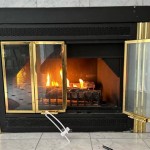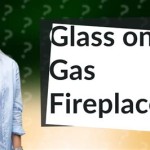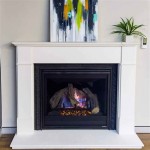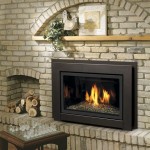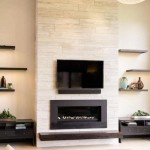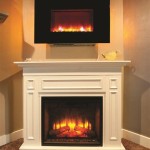The Allure of Two-Sided Gas Fireplaces for Indoor-Outdoor Living
Two-sided gas fireplaces offer a compelling design solution for homeowners seeking to bridge the gap between indoor and outdoor living spaces. These fireplaces, also known as see-through or peninsula fireplaces, feature glass on two opposing sides, allowing the flames to be visible from two separate rooms or areas. This design element provides a unique aesthetic appeal, creating a focal point that enhances both the interior and exterior environments. Beyond aesthetics, two-sided gas fireplaces offer practical advantages, including efficient heating and the potential to increase property value.
The installation of a two-sided gas fireplace typically involves more complex planning and construction than a traditional single-sided fireplace. Careful consideration must be given to factors such as gas line access, venting requirements, and structural integrity. However, the resulting visual impact and functional benefits often outweigh the initial investment and installation challenges. This article explores the various aspects of two-sided gas fireplaces, focusing on their design possibilities, installation considerations, safety features, and maintenance requirements for both indoor and outdoor applications.
Design Versatility and Aesthetic Appeal
The primary draw of a two-sided gas fireplace lies in its design versatility. These fireplaces can be seamlessly integrated into a variety of architectural styles, from contemporary to traditional. The ability to view the flames from two different perspectives creates a sense of openness and connection between spaces. For example, a two-sided fireplace can be installed in a wall separating a living room from a dining area, providing warmth and ambiance to both rooms simultaneously. Similarly, a fireplace can be positioned between an indoor family room and an outdoor patio, extending the indoor living space into the outdoors.
The design possibilities extend beyond simply dividing two rooms. Two-sided gas fireplaces can be incorporated into kitchen islands, creating a unique cooking and entertaining space. They can also be used to create a dramatic focal point in master bedrooms, providing a luxurious and relaxing atmosphere. The flexibility in design allows homeowners to personalize their living spaces and create a truly unique and visually stunning environment. Furthermore, the selection of materials used around the fireplace can further enhance its aesthetic appeal. Stone, brick, tile, and metal can be used to create a variety of looks, complementing the overall design of the home.
The flames themselves contribute significantly to the aesthetic appeal. Modern gas fireplaces offer a variety of flame patterns and intensities, allowing homeowners to customize the look and feel of their fireplace. Some models feature realistic log sets, while others offer more contemporary designs with glass beads or stones. The use of a remote control or smart home integration allows for convenient adjustment of the flame height and heat output, further enhancing the user experience.
Installation Considerations and Venting Requirements
Installing a two-sided gas fireplace requires careful planning and adherence to local building codes. The installation process is typically more complex than for a traditional fireplace due to the need for dual access and venting considerations. It is essential to consult with a qualified HVAC professional and a licensed gas fitter to ensure proper installation and safe operation.
One of the primary considerations is the gas line connection. The fireplace must be connected to a gas supply line, either natural gas or propane. The size of the gas line must be adequate to supply the fireplace with the required amount of gas. The installation professional will determine the appropriate gas line size based on the fireplace's BTU (British Thermal Unit) rating and the distance from the gas meter. A shut-off valve should be installed near the fireplace for safety and maintenance purposes.
Venting is another critical aspect of the installation process. Gas fireplaces require proper venting to remove combustion byproducts, such as carbon monoxide, from the home. There are two main types of venting systems: direct vent and B-vent. Direct vent systems draw air from outside the home for combustion and exhaust the combustion byproducts directly outside, making them a safer and more efficient option. B-vent systems use existing chimneys or dedicated vent pipes to exhaust combustion byproducts. The type of venting system required will depend on the fireplace model and local building codes. For outdoor installations, direct vent systems are generally preferred as they minimize the risk of back drafting and ensure proper combustion.
Structural considerations are also important, particularly when installing a two-sided fireplace in a load-bearing wall. The installation may require structural modifications to ensure the wall's integrity. A qualified structural engineer should be consulted to assess the load-bearing capacity of the wall and to design any necessary reinforcements. Additionally, fire-resistant materials must be used around the fireplace to prevent the spread of fire. This includes the use of non-combustible framing materials and insulation.
In outdoor applications, the fireplace's location is also a key factor. It should be positioned in a sheltered area to protect it from the elements, such as wind and rain. A covered patio or pergola can provide adequate protection. The fireplace should also be positioned away from flammable materials, such as trees and shrubs. Proper drainage should be provided to prevent water from accumulating around the base of the fireplace.
Safety Features and Maintenance
Safety is paramount when operating any gas appliance, including two-sided gas fireplaces. Modern gas fireplaces are equipped with a variety of safety features to prevent accidents and ensure safe operation. These features include flame sensors, which automatically shut off the gas supply if the flame is extinguished, and pressure regulators, which maintain a constant gas pressure to ensure consistent flame operation. Many models also include safety glass panels that prevent accidental contact with the flames.
Carbon monoxide detectors should be installed near the fireplace to provide early warning of any potential carbon monoxide leaks. These detectors should be regularly tested and replaced according to the manufacturer's instructions. A qualified technician should inspect the fireplace annually to ensure that all safety features are functioning properly and that there are no gas leaks.
Regular maintenance is essential to ensure the long-term performance and safety of the fireplace. The glass panels should be cleaned regularly with a non-abrasive cleaner to remove soot and dust. The burner should be inspected periodically for debris and cleaned as needed. The venting system should also be inspected annually to ensure that it is free of obstructions. It is important to consult the manufacturer's instructions for specific maintenance recommendations.
For outdoor gas fireplaces, additional maintenance may be required to protect them from the elements. The fireplace should be covered when not in use to prevent rain, snow, and debris from entering the burner. The burner should be inspected regularly for corrosion and cleaned as needed. The gas line should also be inspected for leaks and corrosion. It is important to follow the manufacturer's recommendations for winterizing the fireplace to prevent damage from freezing temperatures.
Proper ventilation is crucial not only for safety but also for the efficient operation of the fireplace. Ensure that the vents are not blocked by furniture or other objects. If the fireplace is located in a tightly sealed room, it may be necessary to open a window or door to provide adequate ventilation. Following these safety guidelines and maintenance procedures will help to ensure the safe and enjoyable operation of a two-sided gas fireplace for many years to come.
Ultimately, a two-sided gas fireplace can transform a living space, creating a warm and inviting atmosphere that connects indoor and outdoor environments seamlessly. Careful planning, professional installation, and regular maintenance are crucial to maximizing the benefits and ensuring the safe and long-lasting operation of these sophisticated appliances.

Double Sided Indoor Outdoor Fireplace Heat Glo

White Mountain Hearth Dvct40csp Out Rushmore Clean Face Direct Vent Double Sided Indoor Outdoor Fireplace With Log Set 40 Inches

23 Luxurious Double Sided Fireplaces Fireplace Photos

Benefits Of Installing An Indoor Outdoor Fireplace Wyckoff

Indoor And Out No Limitations With Davinci Lopi

Double Sided Indoor Outdoor Fireplace Heat Glo

5 Fireplace Options To Enhance Any Space

Outdoor Lifestyles Twilight Modern Double Sided Gas Fireplace Fireside Hearth Home

42 Inviting Fireplace Designs For Your Backyard Indoor Outdoor Fireplaces Home New Homes

Make Double The Impact With A Sided Fire

